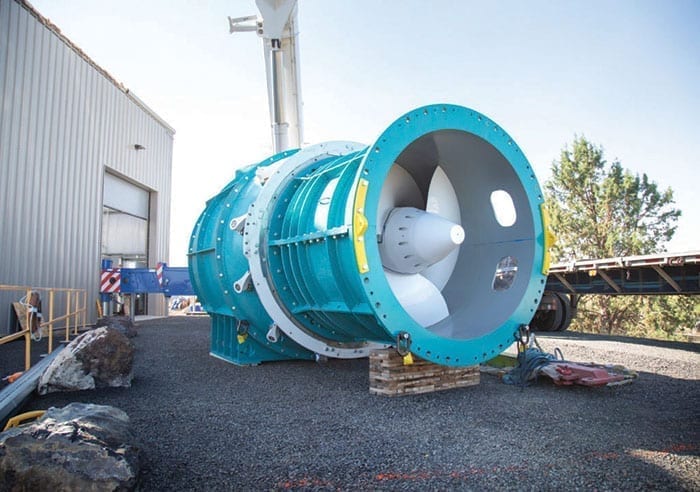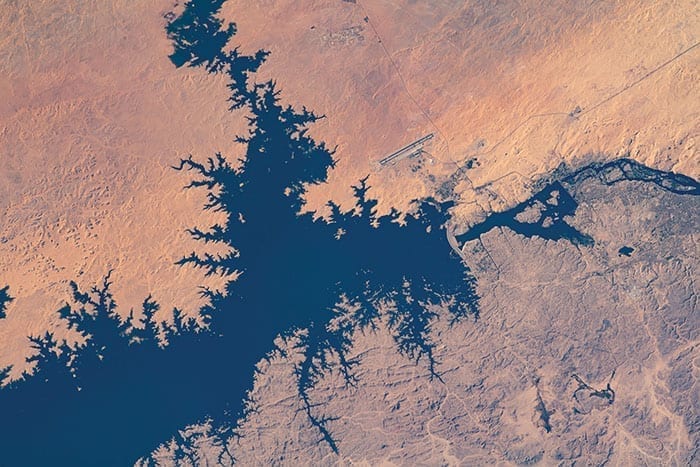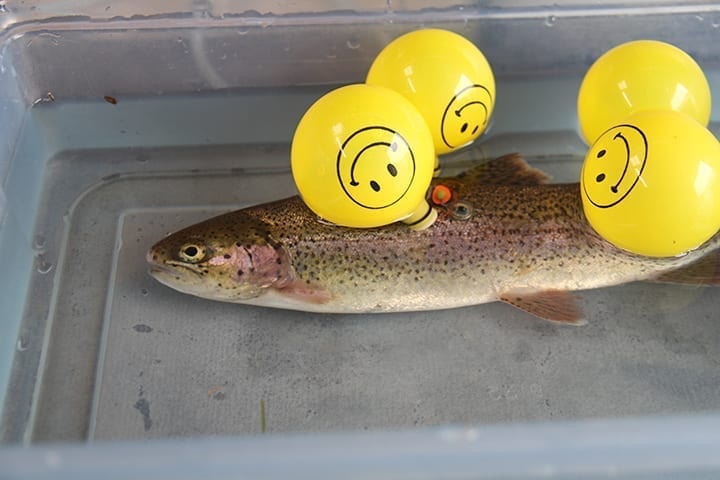The Hydropower Industry’s Sustainability Conundrum
The post The Hydropower Industry's Sustainability Conundrum appeared first on POWER Magazine.

Hydropower makes up the majority of the world's renewable energy capacity, but it's not necessarily an environmentally friendly form of power. However, groups are working to improve hydropower technology to make it more sustainable in the long term.
You hear a lot of talk about sustainability these days, but what exactly does the word mean? According to dictionary.com, one definition is: The quality of not being harmful to the environment or depleting natural resources, and thereby supporting long-term ecological balance." It's obviously a worthwhile goal, but actually achieving the objective is not as easy as it sounds, especially for companies in the hydropower industry.
The largest increase in the use of renewable energy recently has come from the rapid expansion of solar and wind power. Nonetheless, hydropower remains the world's largest source of renewable energy, accounting for more than half of the installed global renewable energy capacity. During a webinar hosted by the International Hydropower Association (IHA) on Jan. 20, Roger Gill, chair of the IHA's Hydropower Sustainability Governance Council, said, Wind and solar have great potential, but they also have limits. It seems to me that hydropower is going to be always a major part of the solution mix."
Is Hydropower Sustainable?However, some experts question whether hydro is truly an environmentally friendly form of power generation. There are significant environmental impacts associated with dams and hydropower plant operations.
For example, flooding land for a hydroelectric reservoir can destroy forests, wildlife habitat, agricultural land, and scenic areas. In some instances, entire communities have to be relocated to make way for reservoirs (Figure 1). While reservoirs can provide benefits, such as flood control, agricultural irrigation, and recreation, they can also negatively affect aquatic ecosystems.
 |
1. The Aswan High Dam was completed in 1970 on the River Nile in Egypt. The reservoir, which is 500 kilometers (km, 310 miles) long and 35 km (22 mi) at its widest, with a surface area of 5,250 km2(2,030 mi2), is shown in this image taken from space. Nearly 100,000 residents and some archaeological sites had to be relocated prior to its filling. Source: NASA |
It's well known that certain species of fish, such as salmon and shad, swim up rivers and streams from the sea to reproduce in spawning grounds in the beds of rivers and streams. Dams can block their natural migration paths. Furthermore, many fish are injured or killed passing through hydropower turbines. The U.S. Department of Energy has reported that fish kills of 5% to 10% are common for the best existing hydro turbines, which is obviously a significant loss (see sidebar).
A Fish-Friendly Hydro Turbine Expanding the use of hydropower comes with the unique challenge of minimizing disruption to watershed ecosystems and mitigating impacts to fish and other aquatic wildlife. Alameda, California-based Natel Energy claims to have the answer. The company says its Restoration Hydro Turbine (RHT) design enables sustainable, climate-resilient, low-cost hydro by combining approaches used to restore watersheds, remove dams, and build new recreational features (such as river surfing waves and white water) with fish-friendly, compact, modular power generation. When my brother and I were coming up with the idea for Natel Energy, the conundrum we faced was how to build hydro differently than it's been done for the last 100 years," Gia Schneider, Natel Energy's CEO and co-founder, told POWER. We knew the approach going forward would likely be distributed, and not necessarily building huge dams. Our main focus was, first and foremost, building an efficient and fish-safe turbine, because in hydropower, your choice of turbine defines the rest of your powerhouse and civil work." Restoration Hydro projects provide several benefits, including habitat creation, improved water quality, and sustained increases in groundwater. When deployed strategically at multiple sites across a basin, the development enhances river, wetland, and watershed connectivity, which can help mitigate the impacts of droughts and floods. Restoration Hydro projects can also link irrigation networks to improve agricultural productivity, and can provide water supply systems for sanitation and household consumption in developing countries. RHTs (Figure 2) can be installed in a range of settings, including retrofits of existing small hydro plants (for low-cost compliance with environmental requirements or to improve output of old units), at existing non-power dams, in irrigation canals, on dam removal projects combined with new hydro, and in run-of-river new stream reach developments. Special fish-friendly blades are optimized for low head-between 2 meters (m) and 10 m (about 6.5 ft to 33 ft)-eliminating the need for fine fish screens, thus increasing total plant efficiency while reducing both upfront, and operations and maintenance costs. The thick, slanted blades deflect fish around the blade, reducing direct strike impacts.
The blades in our turbine have a unique shape that makes them somewhat like an airbag," Schneider said. If fish hit them, the fish are deflected around the blade, as opposed to being struck sharply in a manner that results in cuts, abrasions, breaks, or other injuries. In addition, our turbines have fewer blades compared to conventional turbines, which reduces the chance that a fish hits a blade when passing through the turbine." Results have been very positive. For example, testing done in partnership with Alden Laboratory demonstrated that when rainbow trout were subjected to strikes with a 100-millimeter-thick blade at velocities of 10 m/sec at a location along the blade with a 30-degree slant relative to the tangential direction, the survival rate was 98% compared to 26.8% survival at a location with a 90-degree slant. Additionally, in September 2020, Pacific Northwest National Laboratory (PNNL) executed tests that revealed a 100% survival rate for fish up to 15 inches long passing through Natel Energy's 1.9-meter-diameter D190 RHT at the Monroe Drop Site in Madras, Oregon. PNNL's test, which utilized sensor fish and balloon tag technologies (Figure 3) to analyze the physical turbine stressors and recover trout to assess passage condition, revealed minimal injury or impact to fish passage, even when the RHT was operated at full power.
These results provide important evidence that, if designed correctly, small hydropower facilities do not have to compromise between generation efficiency and biological performance," Schneider said. |
Although water flows through hydropower reservoirs, the water in reservoirs is generally more stagnant than normal river water. Therefore, reservoirs often contain high levels of sediment and nutrients, which provide fertile conditions for algae and aquatic weeds. The unwanted flora can crowd out fish and other animals, as well as more naturally present plant life. Additionally, water evaporates from reservoirs at a much higher rate than in flowing rivers, and if water is released from dams at less than normal rates, downstream areas can dry out more than they would have with natural river flows.
Finally, decomposition of organic material in reservoirs releases carbon monoxide and methane. The exact amount depends greatly on site-specific conditions, but some estimates suggest the lifecycle global warming emissions from reservoirs could be as high as the emissions from a well-run natural gas-fired plant on a per-kWh-generated basis. In fact, the Environmental Defense Fund (an environmental advocacy organization) conducted a study on greenhouse gas emissions from hydropower projects and found that of the nearly 1,500 facilities it examined worldwide-which accounted for about half of global hydropower generation-more than 100 had greenhouse gas emissions that caused more warming than fossil fuels.
Making Hydro More SustainableWork is being done to improve the situation. The IHA recognized the need to develop sustainability tools for the industry and established IHA Sustainability, a not-for-profit subdivision of the organization. About a decade ago, IHA Sustainability created three tools to define and measure sustainability in the hydropower sector. The tools are the Hydropower Sustainability Guidelines on Good International Industry Practice (HGIIP), the Hydropower Sustainability Assessment Protocol (HSAP), and the Hydropower Sustainability ESG [Environmental, Social, and Governance] Gap Analysis Tool (HESG).
As part of its management role, IHA Sustainability offers training and accreditation courses to practitioners in the use of the hydropower sustainability tools. It also assists hydropower developers and operators in identifying accredited assessors for independent project sustainability assessments.
During the Jan. 20 webinar, Joao Costa, head of sustainability with IHA Sustainability, explained that the tools are now being developed into a standard. The aim of the standard is to incentivize and recognize hydropower projects for their ESG performance, helping to set minimum performance expectations for the sector, and publicly rewarding projects for meeting those expectations.
Costa said that over the past 10 years the hydropower sustainability tools have been officially applied to at least 35 hydropower projects around the world, and unofficially to many more. He noted that the three tools-HGIIP, HSAP, and HESG-are aligned and complementary.
It is really a unified set of tools that provide this common language around sustainable hydropower, both for financiers, hydropower developers, civil society, and this is a big aim of these tools, and this is what they do," Costa said.
The assessment process is an evidence-based process. It's very practical. It implies having an independent accredited assessor going to the site, doing the site inspection, interviewing the affected stakeholders from the communities to developers to all actors involved, and also reviewing the documentation. So, it's really a very well-structured and very precise activity that provides enough evidence to take solid conclusions," he said.
The tools are designed to be applicable from the early stage of development, when ideas are still being formed and options evaluated, through the preparation, implementation, construction, and operation of hydropower projects. It's applicable to all projects-same methodology for any type of project, for any size of project, for any location-provides really that common language, that unifying tool, and ultimately, it will allow projects to prove their performance across a range of topics," said Costa.
Among the items produced during an HSAP assessment is a sustainability profile, which is an easy-to-comprehend diagram that allows stakeholders to quickly gauge a project's performance across more than 20 sustainability topics. The visual can help decision-makers better understand various aspects of a project, identify areas for improvement, align with financial mechanisms, make better choices, manage the process, and meet ESG objectives. Costa said the goal of the new standard is not to provide a threshold for sustainability, but rather, to improve transparency and encourage continuous improvement.
-Aaron Larsonis POWER's executive editor.
The post The Hydropower Industry's Sustainability Conundrum appeared first on POWER Magazine.
